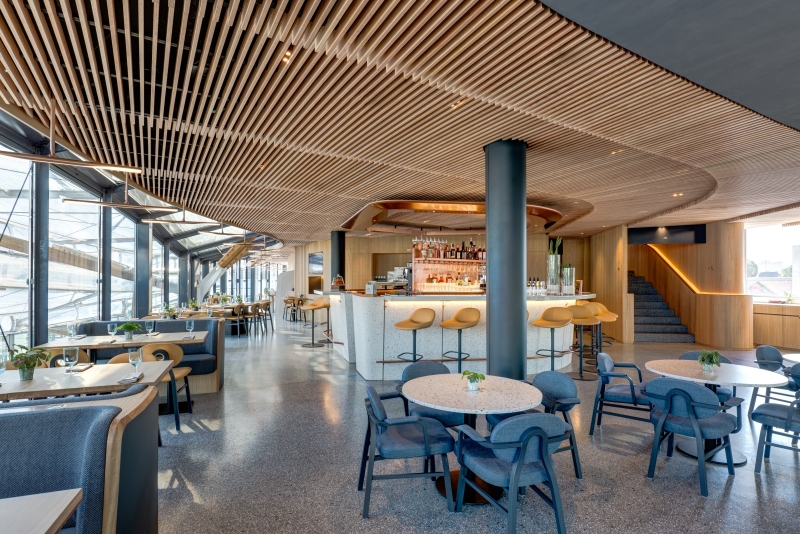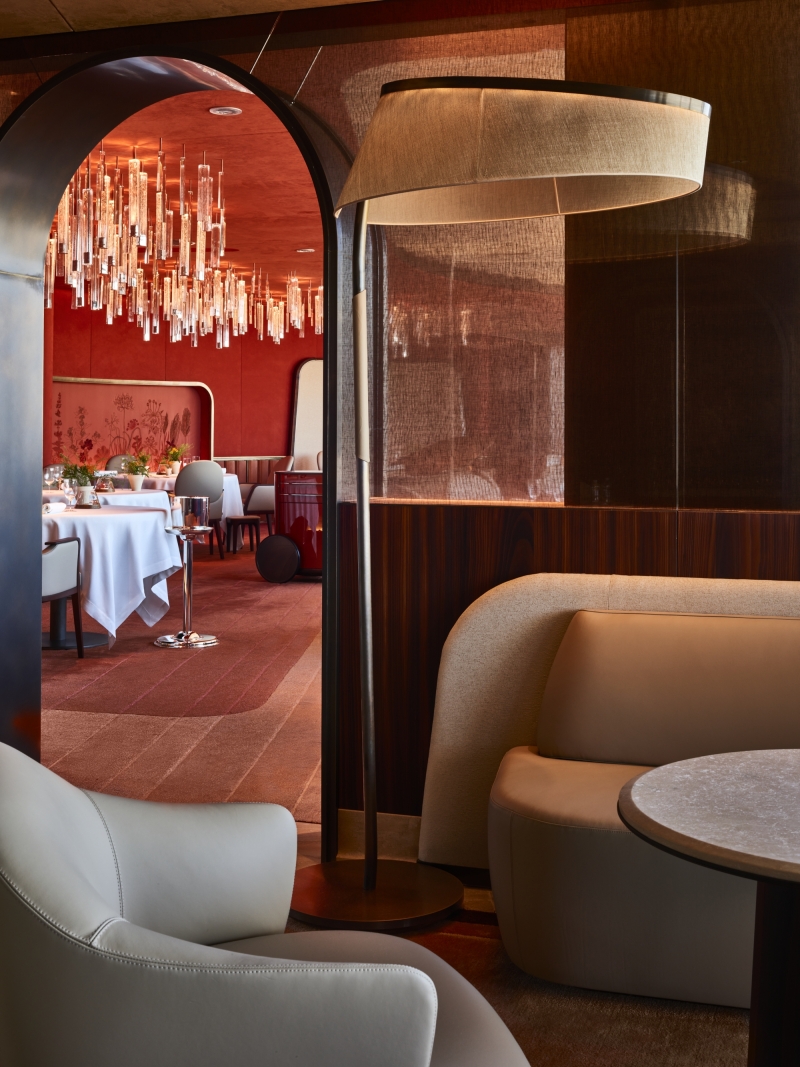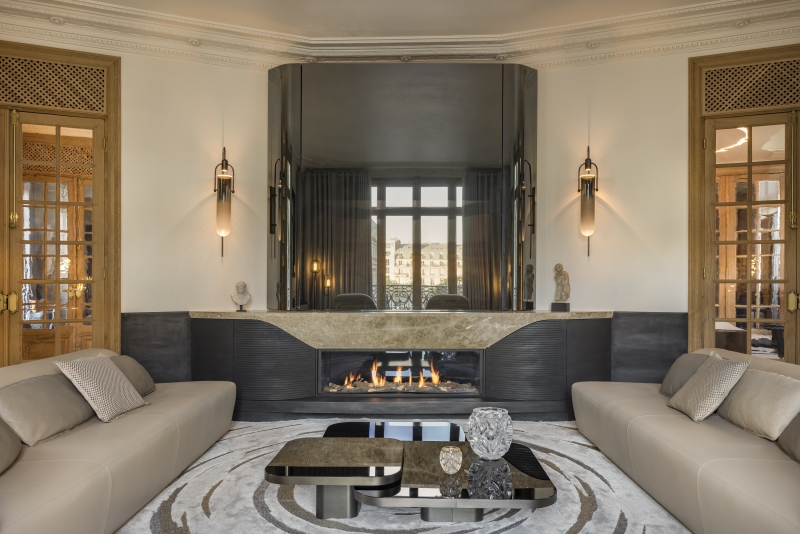
Hospitality
Abbaye de Fontevraud
Région Pays de la Loire - Fontevraud
We quietly slipped into the Saint-Lazare Priory, immersing ourselves in its history and its uniqueness. We tried to capture its essence, from its monastic simplicity to its prison austerity via the wisdom and philosophy of those who built and lived here. Then we had to fine-tune our approach, to give life to a contemporary vision that would respect and preserve the spirit of the building. We didn’t want the visitor to forget where they were. On the contrary, we wanted to assure an intimate experience of the site, allowing the visitor to appropriate fragments of the past in comfort. Achieving this also meant rising to the challenge of the constraints imposed by the building’s classification as an historic monument, notably that we were not permitted to touch the ceilings and the walls. The best approach was to find a way to turn these constraints into opportunities.
With the help of clever furniture and innovative ‘microarchitecture’*, in natural materials chosen for their quality, we were able to address the thermal and acoustic issues in the refectory and the chapel, and the lack of natural light in the chapter house. Guided by the simple honesty of the priory building, which avoids unnecessary stylistic effects, we stayed true to our own signature style: simple and elegant shapes determined by their use and requirements; a refined, fluid and sensual atmosphere that works in harmony with the high-ceilinged spaces and age-old walls.
What we wanted for Fontevraud was not the classic hotel and restaurant experience, but something unique. A journey between tradition and modernity that reinterprets the story of Saint-Lazare for the future, marrying emotion, sensual pleasure and poetry.
Patrick Jouin et Sanjit Manku


The refectory, transformed into a banqueting hall, captures the communal essence of the original priory. Rearranged to host a variety of events, it has been designed as an adaptable space.

The restaurant
The cloister, which serves as the central focal point of the Saint-Lazare priory, can be considered its "stone heart." In order to revitalize this space, Patrick Jouin and Sanjit Manku opted for a strategy of transparency. By using freestanding glass partitions, one section of the restored cloister has been returned to its original purpose as a promenade area, while the remaining portion is now occupied by the restaurant.





The ibar
Within the new hotel complex, the chapel serves as a communal meeting area accessible to all Abbey visitors. Though initially considering the possibility of creating a spa, the concept eventually evolved into the creation of a digital mediatheque accompanied by a bar. The challenge was to implement this transformation without causing offense. The solution involved the installation of a lengthy oak monolith with an altar-like appearance. This adaptation has transformed the space into something beyond a traditional chapel while not exactly resembling a bar either; rather, it presents an unexpected blend of both functions. Enjoying a beverage within this heritage space, designated for gatherings and sharing, offers an opportunity to extend the Abbey visit, engage in learning, and even participate in interactive experiences facilitated by touch-screen tabletops and integrated digital tablets.


Under the gothic arches of the chapel, six screens, each different, sober and elegant, allow the visitor to gently appropriate the space. As reference points at a human scale, they respond to the monumentality of the chapel, softening the soaring volumes.
While proposing an alternative version of this space, these ‘microarchitectures’ in natural oak, covered with a double stretch-knit fabric by Innofa, also help to warm the atmosphere and soften noise. In addition, an indirect light is diffused through Elitis linen from behind the screens. In all, an effective mix of function and aesthetics


The hotel


The mobile metal lamp embodies a sense of portability within the hotel bedrooms. Hung from the steel bar, it possesses the right combination of lightness, equilibrium, and safety, allowing it to be effortlessly removed and transported to other areas. Meticulous attention has been paid to its ergonomic features, exemplified by the wooden handle designed for optimal comfort when held.




PROCESS
Founded in 1101 by Robert d’Arbrissel, a charismatic
and iconoclastic preacher, for seven centuries the abbey provided the setting
for an unusual monastic community. D’Abrissel decreed that the Fontevraud order
should be mixed, welcoming both men and women, from aristocrats to penitent prostitutes. It
was run under the authority of 36 successive abbesses. It was a burial site for
the Plantagenets, as the presence of the reclining effigies of Eleanor of
Aquitaine, of Henry II and of Richard the Lionheart attest. At the beginning of
the 19th century, Napoleon ordered the conversion of the abbey into a prison, saving
it from the fate suffered by the abbey at Cluny, which at the same period was largely
destroyed and used as a stone quarry. Fontevraud’s extraordinary but salutary
period as a prison came to an end in 1963, with a series of restoration
projects that were to confer on Fontevraud the appearance it has today.
Distributed over 13 hectares, the four priories are arranged around the
cloister of Sainte-Marie, a peaceful haven at the centre of the Grand-Moûtier
monastery, serving the abbey church, chapter house, chapel, refectory, kitchens
and dormitories.


The project to reopen a hotel and restaurant in the Saint-Lazare priory goes beyond its physical appearance, regardless of its magnificence. With careful planning, this hotel endeavor is a part of the grander vision for the 'Contemporary City of Fontevraud.' It fully incorporates various elements, from cultural vibrancy to sustainability, digital innovation to warm hospitality. David Martin, Director General of the Abbey, highlights, "While establishing a 4-star hotel and a haute cuisine restaurant ensures comfort and service, the goal wasn't solely to enhance the region's hotel offerings."
The project's significance extends much further. Capturing the essence of the location, it seeks meaning and evokes emotions. An ambitious aspiration, akin to a dream! A vision that matches the captivating beauty of the abbey and its millennium of history.








The renovation project for the prieuré Saint-Lazare, approved by the Commission nationale des Monuments historiques, began in 2012 under the direction of the architect en chef des Monuments historiques, Gabor Mester de Parajd, and Jouin Manku. For more than two years, they ingeniously transformed the listed building into a hotel-restaurant without altering its original envelope. Significant additions were made, such as the reconstruction of buttresses and a turret, as well as the restoration of missing elements, such as the cells of the Bourdonnais dormitory with their 1504 layout. Adjustments were also made to ensure the smooth flow of traffic and service to most of the rooms, despite the challenges of such a historic site.














Informations
Interior architecture and design | Jouin Manku Patrick Jouin Sanjit Manku Elodie Martin Bénédicte Bonnefoi Henry Gagnaire Antoine Lesur Bruno Pimpanini Charles Pons |
| Executive architect | SLA Architecture |
| Project owner | Région Pays de la Loire et Abbaye Royale de Fontevraud David Martin Daniel Cognata Emmanuel Jarry Daniel Quintric Malik Mouhoud |
| Lighting designer | L’Observatoire International |
| Custom furniture | Patrick Jouin iD |
| Year | 2014 |
Credits
Site © David Darrault, Abbaye de Fontevraud
Realization © Nicolas Matheus

✕








